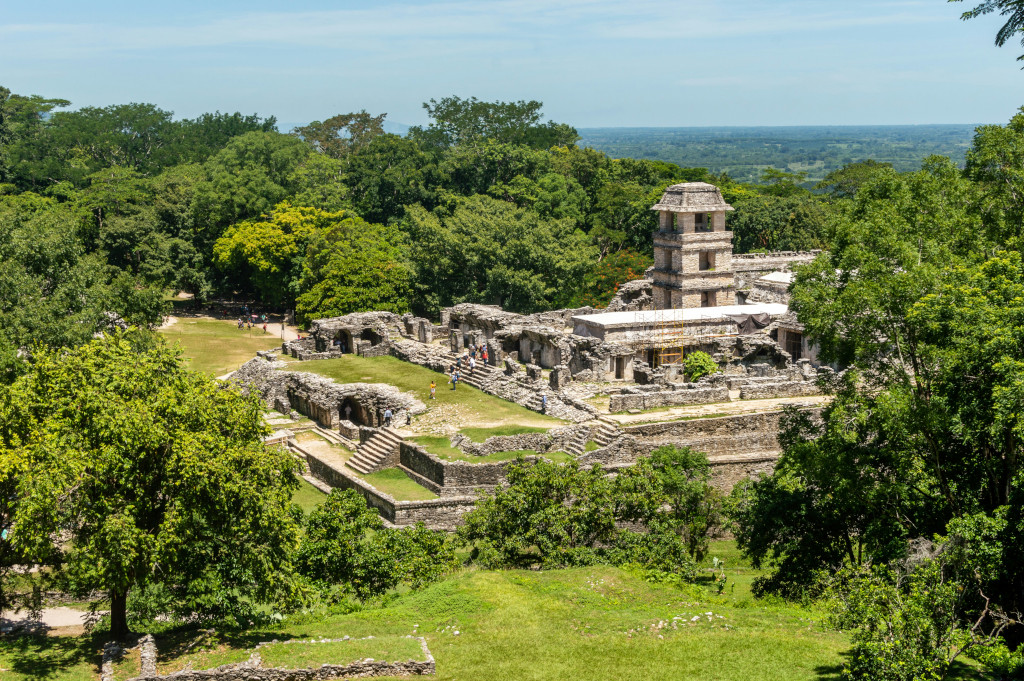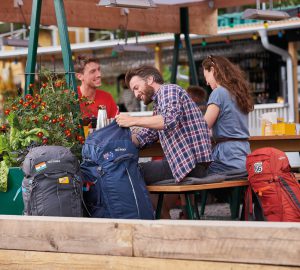Mexico is huge and has more to offer than can be experienced in a single trip. You can find more than enough very informative blog articles on the internet about the classic backpacker entry point in the province of Yucatán with its Mayan ruins, cenotes and endless dream beaches, which is why we want to focus on an equally well-known but somewhat less crowded destination in this backpacking guide: Chiapas.
The province of Chiapas is located in south-eastern Mexico and borders Guatemala. It is home to a large minority of different indigenous peoples – Spanish is not the first language for everyone here. In addition to its cultural diversity, Chiapas also offers pretty much everything you can imagine in terms of nature: Deep jungle, spectacular waterfalls, volcanoes, plateaus, Pacific dream beaches – and much more. With the enchanting colonial city of San Cristóbal de las Casas, you can also look forward to urban exploration tours.
Getting around Chiapas
If you want to experience Chiapas in all its glory, you will be driving a lot across the province. You don’t necessarily have to rely on a rental car. The Mexican bus network is very good, and where the regular buses don’t go, you are guaranteed to get around on one of the smaller shared buses (colectivos) or by cab. Of course, you have more flexibility with a rental car, but the bus rides in Chiapas are part of the experience – not least because of the people you can observe and get to know. It is also cheaper.
Getting to Chiapas from Europe is not quite as convenient as getting to Yucatán. We suggest flying to Mexico City first, spending a few days there and then either taking another cheap domestic flight to Tuxtla Gutierrez (approx. 2 hours) or taking a very long bus journey (approx. 16 hours). This turns a 20-hour flight with several stopovers into a much more pleasant affair.
Recommended reading: Dos and dont’s in Mexico – How to behave correctly on your trip to Mexico
Our route starts in Tuxtla and takes you for three to four weeks through Chiapas back to the starting point. However, the route can also be shortened with a look at the map and a little research if you want to explore other regions of Mexico. If you want to travel on to Guatemala from Mexico, this Chiapas trip is perfect for you, as the region borders Guatemala and there are several bus connections across the border.
We plan around 26 days for our route. There is potential for savings at almost all stops with several days if you only have three weeks. If you only have two weeks, you can also return from Comitán to San Cristóbal, which is only 110 km away, and save the coastal region for next time.
Day 1: Arrival in Tuxtla
Day 2: Sumidero Canyon and Chiapa de Corzo
Day 3-6: San Cristóbal and surroundings
Day 7: Journey to Palenque
Day 8-10: Mayan ruins in and around Palenque
Day 11: Journey to Comitán
Day 12-15: Comitán, El Chiflón waterfalls and Lagos de Montebello
Day 16: Journey to Tapachula
Day 17-18: Ruta del Café
Day 19-22: Pacific beaches
Day 23-25: El Arco del Tiempo
Day 26: Return journey to Tuxtla
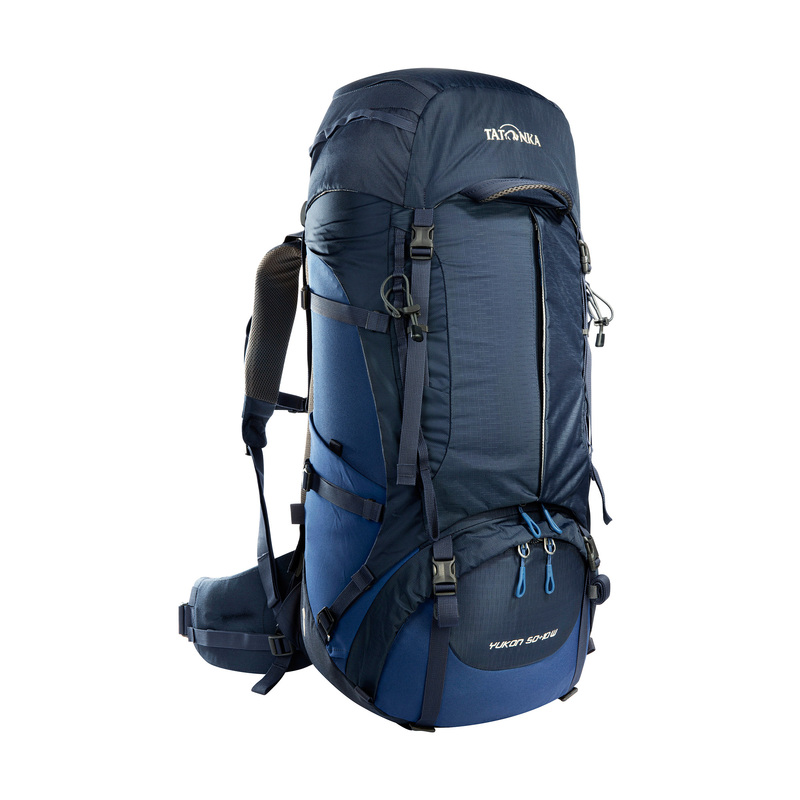
Are you looking for a backpack for your next backpacking trip? Then our Yukon is the perfect companion for you. Equipped with a large front opening, lockable zippers and an adjustable back system that allows you to transport your luggage over longer distances without straining your back. The Yukon is available as a unisex version and as a special women’s model.
Tuxtla, Sumidero Canyon and Chiapa de Corzo
Tuxtla itself is characterized above all by one thing: the airport. Of course, this city also has a few small sights to offer, but they are rather negligible compared to what awaits you. Tuxtla is a very good entry point to Chiapas if you are coming to Mexico directly from Europe and have not been to the Yucatán Peninsula before. If this is the case, you can also start your trip from San Cristóbal de las casas.
From Tuxtla, it is possible to book a day tour to the Sumidero Canyon, which is only a few kilometers away and takes you directly to San Cristóbal (approx. 60 km from Tuxtla). This allows you to combine one of the region’s most beautiful highlights with an important part of your trip. Your hostel can certainly help you with the booking, and a quick internet search will also show you several tour providers.

Make sure you also include a visit to the nearby pueblo mágico Chiapa de Corzo. The small town is the gateway to the Sumidero Canyon and is really very pretty. Alternatively, this day trip can also be organized on your own with colectivos and local tour providers from Chiapa de Corzo.
Once you’ve completed this first part of your trip, it’s time for a Mexico highlight: San Cristóbal de las casa is an absolute backpacker hotspot – and for good reason.
San Cristóbal de las casas
San Cristóbal de las casas (San Cris for short) is located at 2,120 meters above sea level and therefore has a pleasant, sometimes even cool climate. Many of the more than 200,000 inhabitants are of indigenous descent, which gives the city an exciting mix of (post-)colonial and Central American culture. Between the Catholic churches and colorfully painted old colonial houses and the lively markets and stores, there is plenty to discover. The food, which will make your mouth water on seemingly every street corner, is an excellent introduction to the cuisine of Chiapas.
You can set up your base for the next few days in San Cristóbal. Apart from the city itself, some of the highlights of Chiapas can be easily reached from here on day or multi-day tours.
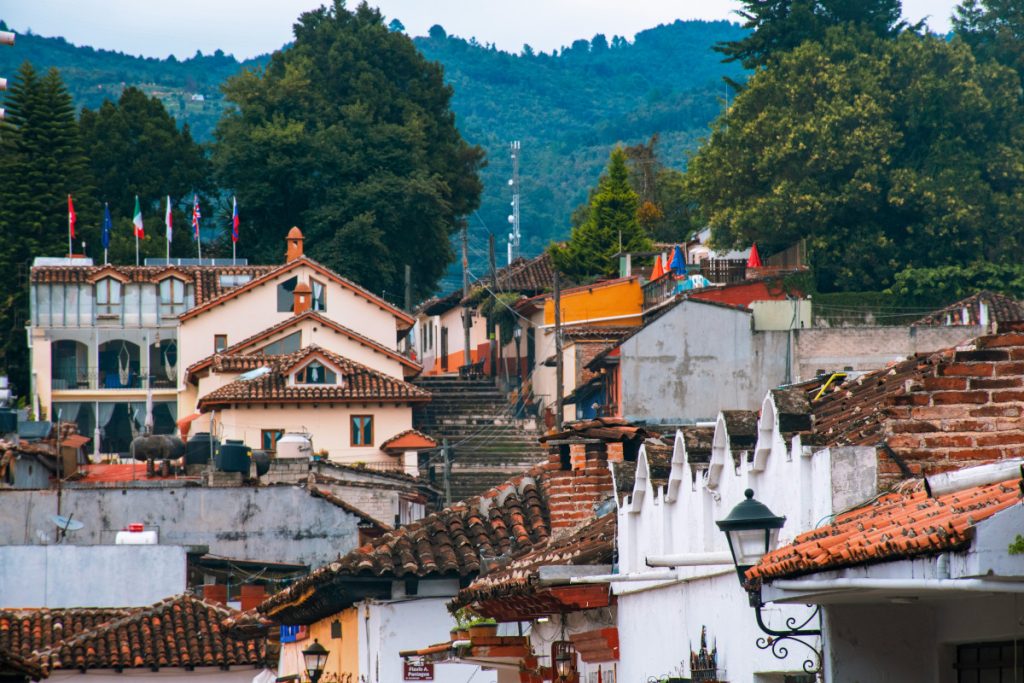
San Juan Chamula
San Juan Chamula is one of the pueblos mágicos of Chiapas and is located just ten kilometers from San Cris. The inhabitants of San Juan Chamula are 99% indigenous. Shamanism is still taught and practised here, alongside a very unique form of Christianity.
The inhabitants of San Juan Chamula interweave their traditional Mayan beliefs with the distinctly modern practices of Catholicism. This results in a unique blend that is fascinating to observe even for non-religious travelers: Live chickens are sacrificed in the local church and body and soul are purified by – no joke – drinking Coca-Cola mixed with the local liquor, Pox. Water is more expensive here than Coke and Chiapas has the highest Coke consumption per capita in the world. They drink more than 2 liters of cola per day on average – the health consequences are correspondingly dramatic.
Another important aspect of this unique belief system is that you should be extremely cautious about taking photos of the population, especially without prior permission. Travelers to Asia are probably already familiar with this: people believe that a photo steals a piece of the soul. Ideally, refrain from taking pictures of the locals, as they are too polite to say no when in doubt, but you will still be damaging them. Photography is strictly forbidden inside the church and is punishable by a heavy fine (approx. 200 euros).
Zincantán
If you still have time, be sure to extend this day trip to include neighboring Zincantán. There are several female-run weaving cooperatives there and the opportunity to get to know a completely different indigenous culture. The local Catholic church is very different from the one in Chamula: Here, the altar is strewn with flowers, which perfectly matches the floral pattern-dominated clothing of the local women and is due to their indigenous beliefs.

For some backpackers, a visit here can feel a little too touristy, as you will be approached relatively quickly by “guides” who want to show you around the cooperatives. In this case, however, it is worth it: they explain a lot of interesting details about the history of the place, the indigenous culture, the weaving technique and you are sometimes invited to lunch with a local family, where you can try the local cuisine and the aforementioned Pox schnapps.
Palenque, Bonampak and Yaxchilan
The next part of your journey through Chiapas is dedicated to one of the most exciting aspects of indigenous culture: the ancient Mayan ruins in Palenque, Bonampak and Yaxchilan. To experience these, you will now shift your base for a few days to Palenque, which you can reach by bus from San Cristóbal.
On the way from San Cristóbal to Palenque there are the Agua Azul waterfalls, which promise a nice and very photogenic stopover on the winding journey. You can also visit these from Palenque by public transport.
The Mayan ruins of Palenque can be visited at your own pace. You can also have a local guide explain the history and features of these impressive buildings to you on site to learn more about the history of the Maya.
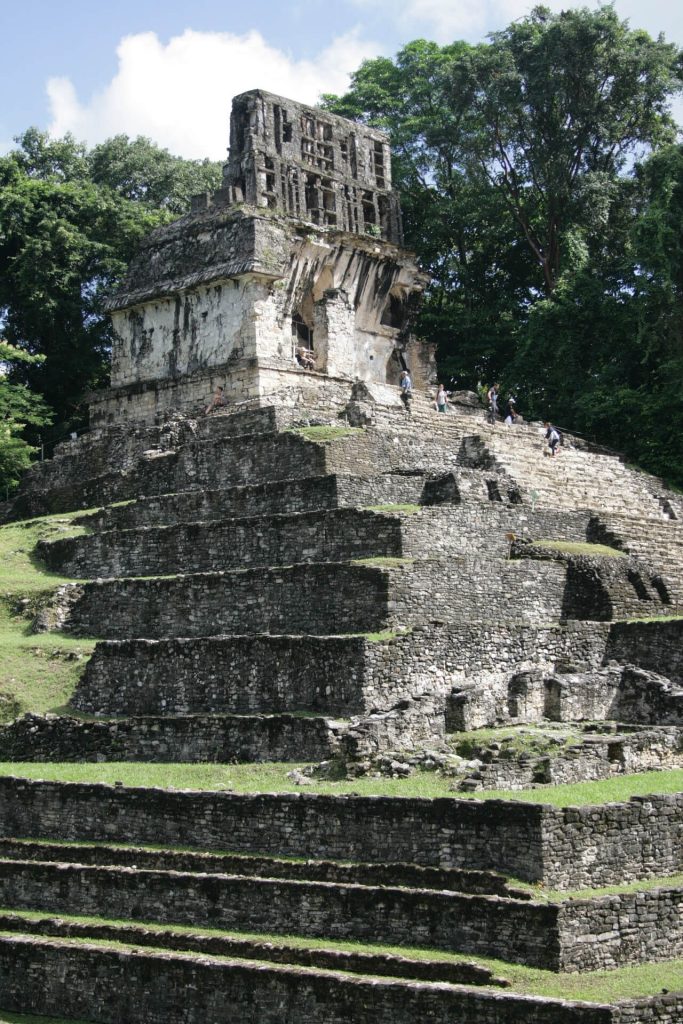

You can book a tour to the ruins of Yaxchilan and Bonampak either online or at your hostel. On this tour, you will dive deep into the Mexican-Guatemalan jungle and experience two unique ancient sites. You can reach the Yaxchilan ruins via a one-hour river trip through the middle of the dense rainforest – if that doesn’t give you an expedition feeling! The Bonampak temples are a veritable labyrinth of ruins and are famous for their very well-preserved, colorful murals.
Travel tip:
At this point, it should be mentioned that a rental car could also be worthwhile for this section, especially if you are not traveling alone. The ruins of Yaxchilan and Bonampak are a little off the beaten track and, with your own transportation and an overnight stay in Lacanjá, make for an unforgettable two-day trip into the jungle. If you are traveling by car from San Cristóbal, you can adapt this itinerary so that you continue directly from Lacanjá to the Lagos de Montebello and from there back to San Cristóbal via the El Chiflón waterfalls.
Comitán, El Chiflón waterfalls and Lagos de Montebello
After this dose of Mayan history, it’s back to San Cristóbal, but only to travel on to Comitán straight away (or the next day). Comitán is another pueblo mágico and worth a day of your time to explore the local indigenous culture.
You can spend the night here and tackle the El Chiflón waterfalls. Five breathtaking waterfalls, turquoise-blue natural pools, hiking trails, camping opportunities and activities such as ziplining await you in this huge nature reserve. You can easily spend a day or two here.
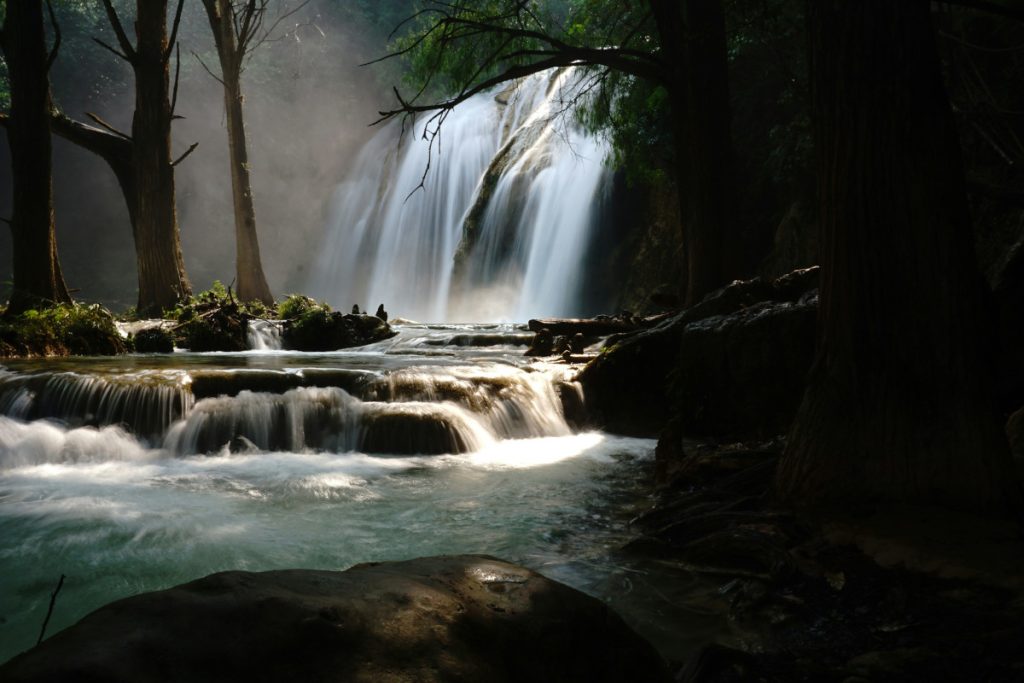
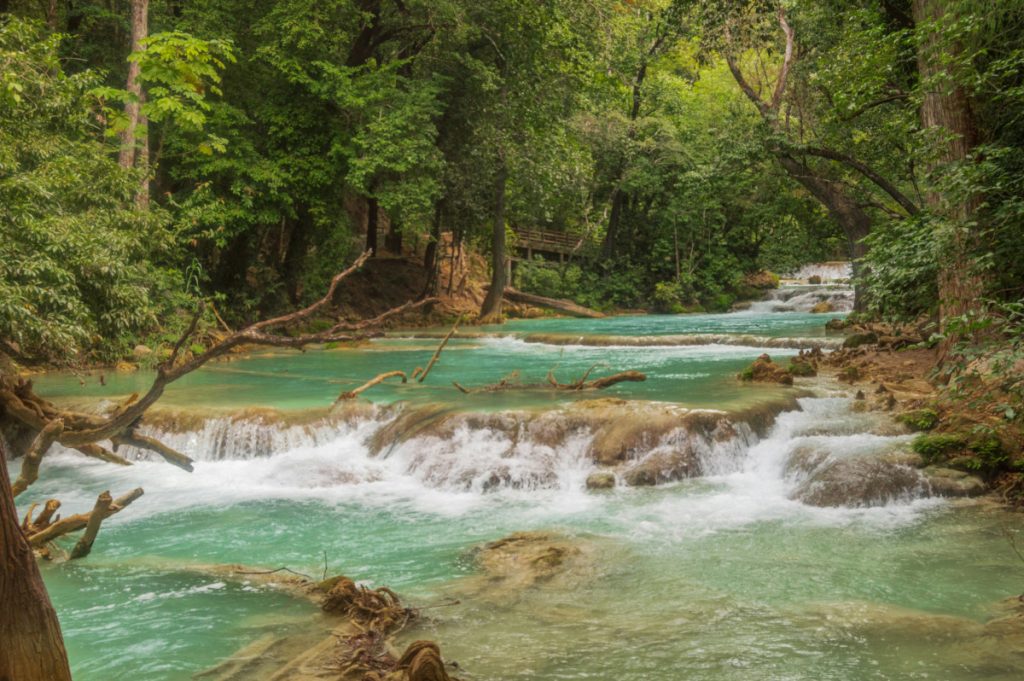
The Lagos de Montebellos are a collection of 59 beautiful lakes on the Guatemalan border, 10 of which are open to the public. You can easily reach them from Comitán by cab or tour in under an hour. Alternatively, you can stay overnight in one of the lodges and spend two days here.
Each of the lakes offers something very special: on Lago Pojoj, you can take a wooden raft to a beautiful island in the middle of the lake where orchids bloom. Lago Tziscao is perfect for swimming and camping. The Lagunas de colores present themselves in delightful different shades of blue and the Lago Internacional allows you to virtually stand with one foot in Guatemala and the other in Mexico. Lago Montebello impresses with its size and the Cinco Lagos are all connected by small breaches.
If you want to hike the equally exciting caves and flora and fauna of the area, a guide is not a bad idea to get the most out of your tour.
Tapachula and the Ruta del Café
From Comitán you take a bus to Tapachula. A word of warning for this journey: You will be crossing the mountain ridge of the Sierra Madre on this section. If you get sick on winding roads, definitely do not drive this route at night and take appropriate precautions to make sure you get through it safely.
Tapachula is already in the coastal region of Soconusco, but still at the foot of the Sierra Madre. In addition to the cultural and natural diversity, from Parque Hidalgo in the center of the city you can see the nearby, impressive Tacaná volcano, which towers over both countries right on the border with Guatemala.

Tapachula is also the gateway to the Ruta del Café, a completely underrated highlight of Chiapas due to its somewhat remote location. In the middle of the high-altitude jungle vegetation, there are several coffee plantations to discover. In and around these fincas, you can hike, get to know the flora and fauna, go mountain biking, horse riding and learn about the processes of coffee production and floriculture. The plantations are located between 600 and 1250 meters above sea level, so the climate is pleasantly cool.
There is also a waterfall worth seeing here: the dizzyingly high San Francisco Waterfall in the village of El Eden, where you can admire the local flora and fauna as well as go trekking and mountain biking. Rafting is also offered during the rainy season.
Pacific beaches in Boca del Cielo and Puerto Arista
Now you can enjoy the beautiful sandy beaches that Mexico is so famous for – after so much culture, jungle expeditions and long bus rides, you’ve really earned a few days of beach life. Chiapas is particularly good for this in its two most famous beach resorts: Boca del Cielo or Puerto Arista. Where you choose to stay is entirely up to you. Both offer endless sandy beaches, surfing, kayaking and relaxation.
Depending on your beach appetite, you can decide whether you want to head straight back to Tuxtla or whether you fancy one last time in the jungle. We definitely recommend the latter.
El Arco del Tiempo
Around four hours north of Puerto Arista lies Cintalapa, the gateway to a real outdoor adventure. The Arco del Tiempo is a rock arch hidden in the middle of the jungle that opens like a gothic portal 158 meters high above the heads of its visitors. This makes it one of the highest geological formations of its kind in the world. Getting there, however, is a two-day tour.
You hike through the dense jungle and abseil down steep canyon walls to reach your overnight camp directly on the Arco – in the middle of nature. All you have to do here is swim in the water and soak up Mexico’s wilderness. Alternatively, you can reach the Arco on a kayak tour up the river.
The hiking tour is not for beginners or the unathletic: The hike is sweat-inducing and abseiling is a real thrill. Find out about the tour beforehand by asking other travelers and the guides on site if you are unsure.
Departure
From Cintalapa, a final bus ride will take you back to Tuxtla, from where you can either continue your journey or return home. As an alternative to the flight from Tuxtla, there is also a bus connection from Cintalapa to Mexico City or Oaxaca.




